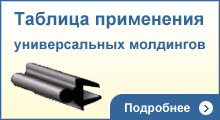| АВТОСТЕКЛА: продажа автостекол, доставка и установка автостекол в Москве |
в мире автостекол
| Email для связи: |
НОВЫЕ ПОСТУПЛЕНИЯ Пятак K343 PMA (крепление внутрисалонного зеркала) для Chevrolet, Ford, Hyundai, Kia, Mazda, Nissan, Toyota 
200 руб.
СПЕЦ. ПРЕДЛОЖЕНИЕ Стекло опускное правой задней двери для Mercedes W 210 sedan 95 - 
1 200 руб.
А ЗНАЕТЕ ЛИ ВЫ, ЧТО... Впервые вклеенные стекла в Европе появились на серийном автомобиле Audi 100, сошедшим с конвейера в 1973 году, а в Америке на Oldsmobile Cutlass в том же 1973 году.
|
Volkswagen CC 20102010 Volkswagen CC.Windshield and back glass removal and replacement instructions
Vehicle type: Four-door sedan NAGS numbers*: Windshield part numbers FW3090 rain sensor, solar, acoustic interlayer; and FW3091 rain sensor, solar, acoustic interlayer, lane departure; back glass part numbers FB24254 heated, solar; and FB24255 heated, solar, diversity antenna. Helpful tools or supplies: New rain sensor or gel pack; touch-up paint Watch for: All sides of the back glass are exposed, with an underside PAAS-like molding on the bottom only that will come attached to the new glass. If you scratch the vehicle body during cutout, outside of the bonding area, take care not to prime where it will be visible. It might be necessary to use touch-up paint instead of pinchweld primer. A. Windshield 2. Drape the fender with a fender cover and tape up any vulnerable areas on the vehicle to protect against possible damage. Tape up the defroster vents to prevent debris from falling into the openings. 3. Close the doors, windows and hood, and check operation of the rain sensor by sprinkling the rain sensor window with water. The wipers should wipe and then stop. 4. Remove the two-piece decorative cover from the base of the rearview mirror. 5. Release the rain-sensor retaining strap from the bracket’s sides. Disconnect the lane departure wiring connector. 6. Remove the windshield-wiper nut covers. 7. Remove the windshield-wiper nuts using a 13-millimeter wrench or socket. Lift the wiper up and off the wiper post. 8. Open the hood and remove the weatherstrip from the front of the cowl panel and firewall. 9. Beginning in one of the corners, use a plastic stick to pry the cowl panel upward, releasing the cowl edge from the glass retainer at the base of the glass. The cowl is a two-piece panel. Set it in a safe place.
Removal 12. Before cutting out the windshield, remove contaminants from the glass and pinchweld to prevent contact with the urethane. 13. Tape up the vehicle body around the perimeter of the glass to avoid damaging the paint during cutout. 14. Use the cutting tools of your choice to remove the glass from the adhesive bead. If you use a power tool, lubricate the cutting area with water. Spray the top and sides; then make your cuts. 15. Take the windshield out of the opening using vacuum cups. Make sure the vacuum cups do not overlap a crack in the glass. Lift the glass and place it on a windshield stand or suitable workstation. Installation 17. Dry fit the new glass to the opening. Mark your glass using a grease pencil or retention molding tape. 18. Place your vacuum cups on the new windshield in the appropriate location. 19. Set the windshield onto the old urethane. 20. With the windshield resting in the opening, make sure it is in the right spot. 21. Adjust both sides to the correct setting, marking the passenger side, then the driver side. Lift the glass and place it on a windshield stand or suitable workstation. 22. Follow the urethane manufacturer’s recommendations for installation. 23. Remove the shipping strip from the lower cowl retainer at the bottom of the glass. 24. Clean the inside of the windshield using a urethane manufacturer-recommended product. Do not touch the bonding area of the windshield after cleaning, prepping or priming it. 25. Wear powder-free Nitrile gloves to protect against harsh chemicals. 26. Apply the glass prep and primer following the urethane manufacturer’s recommendations. 27. Using the tool of your choice, remove the original urethane bead, leaving 1-2 mm of urethane on the pinchweld. Make sure there are no contaminants and do not touch the pinchweld after prepping the area. 28. Apply the pinchweld primer only to the areas where needed, and follow the urethane manufacturer’s recommendations. Allow preps and primers to dry as recommended by the urethane manufacturer. 29. Apply a triangular bead of urethane to the same path as the freshly cut urethane on the pinchweld. Before cutting your V-notch, cut the tip off of your nozzle with a nozzle-cutter. With the cut nozzle, measure to the top of the roofline, and at 1/16-inch higher than the roofline, make a mark on the nozzle with a pen or marker. Notch the nozzle up to the marked line; this will give you the appropriate triangular bead. 30. Lift the windshield from the windshield stand or workstation using vacuum cups. Set the windshield on the urethane at the mark you made during your dry fit. Lower the driver’s side of the windshield onto the urethane and line it up with the dry-fit mark; it is now in place. 31. The windshield is now ready to be decked. Press firmly to ensure a good seal. 32. Before re-installing the parts, check for leaks. Use a leak detector to go over the perimeter of the windshield. If you find a leak, apply more pressure or add more urethane to the spot and ensure that the glass makes contact with the wet urethane. 33. Re-install the removed parts in reverse order. The two-piece cowl will be easier to re-install if you join the two pieces together before inserting into the retainer. 34. Allow the urethane to cure according to the urethane manufacturer’s recommended cure time before returning the vehicle to the customer. Warning: Disregarding the safe drive-away time that your urethane manufacturer recommends could jeopardize the structural integrity of the vehicle and the safety of its passengers. 35. You have completed the removal and replacement of the windshield. B. Back glass 2. Remove the interior quarter-panel trim. Disconnect the defroster wiring connectors and the diversity antenna wiring. 3. All sides of the back glass are exposed, with an underside PAAS-like molding on the bottom only. This will come attached to the new glass. 4. Tape up around the perimeter of the glass to avoid damage to the wall of the pinchweld. 5. Cut out the back glass using the tools of your choice. If you use a power tool, lubricate the cutting area with water. Spray the top and sides; then make your cuts. Installation 7. Dry fit the new glass to the opening. Mark your glass using a grease pencil or retention molding tape. 8. Place your vacuum cups on the new back glass in the appropriate location. 9. Set the glass onto the old urethane. 10. With the glass resting in the opening, make sure it is in the right spot. 11. Adjust both sides to the correct setting. Lift the glass and place it on a windshield stand or suitable workstation. 12. Follow the urethane manufacturer’s recommendations for installation. 13. Clean the inside of the glass using a urethane manufacturer-recommended product. Do not touch the bonding area of the back glass after cleaning, prepping or priming it. 14. Wear powder-free Nitrile gloves to protect against harsh chemicals. 15. Apply the glass prep and primer following the urethane manufacturer’s recommendations. 16. Using the tool of your choice, remove as much of the original urethane bead as the urethane manufacturer recommends. Be careful not to scratch the floor or the wall of the pinchweld because they are visible after the glass is installed. Before removing the urethane, make sure there are no contaminants and do not touch the pinchweld after prepping the area. 17. Apply the pinchweld primer only to the areas where needed, and follow the urethane manufacturer’s recommendations. If you scratch the vehicle body during cutout, outside of the bonding area, take care not to prime where it will be visible. It might be necessary to use touch-up paint instead of pinchweld primer. Allow preps and primers to dry as recommended by the urethane manufacturer. 18. Apply a triangular bead of urethane to the same path as the freshly cut urethane on the pinchweld. Before cutting your V-notch, cut the tip off of your nozzle with a nozzle-cutter. With the cut nozzle, measure to the top of the roofline, and at 1/16-inch higher than the roofline, make a mark on the nozzle with a pen or marker. Notch the nozzle up to the marked line; this will give you the appropriate triangular bead. 19. Lift the back glass from the windshield stand or workstation using vacuum cups. Set the glass on the urethane at the mark you made during your dry fit. Line it up with the dry-fit marks; it is now in place. 20. The back glass is now ready to be decked. Press firmly to ensure a good seal. 21. Before re-installing the parts, check for leaks. Use a leak detector to go over the perimeter of the glass. If you find a leak, apply more pressure or add more urethane to the spot and ensure that the glass makes contact with the wet urethane. 22. Re-install the removed parts in reverse order. 23. Check the operation of the defroster, wiper, washer and antenna systems. 24. Allow the urethane to cure according to the urethane manufacturer’s recommended cure time before returning the vehicle to the customer. 25. You have completed the removal and replacement of the back glass. |






